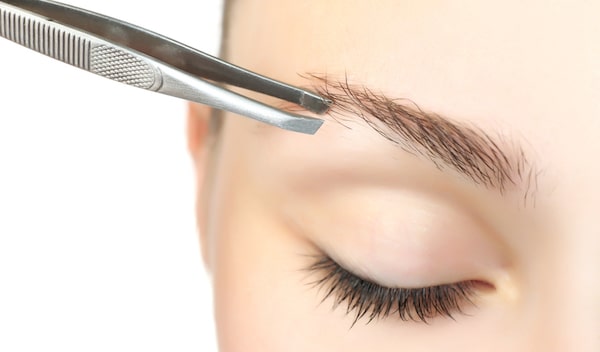Frontal Fibrosing Alopecia and Eyebrow Hair Transplants – See the Study Results
When it comes to hair restoration, most people instantly think about the restoration of hair on the scalp. In the last few years, eyebrow hair transplant has grown in popularity and it continues to be requested by many patients. Thanks to improved FUE hair transplant techniques, eyebrow hair transplant is a minimally invasive procedure that is also very effective in providing patients their desired results.
Eyebrow Hair Transplant Study Regarding Frontal Fibrosing Alopecia

A recent study was conducted to determine both the long-term and short-term results of eyebrow hair transplantation in patients suffering from frontal fibrosing alopecia. The loss of eyebrow hair has long been considered to be a primary feature of the condition known as frontal fibrosing alopecia (FFA). This loss of hair can cause patients to feel a good deal of emotional distress as well as cause them to seek medical help for the condition. Even though eyebrow hair transplants are a well-known treatment that provides aesthetically pleasing results, there is still a need for more information about the results of the surgery in the subset of patients that have undergone this procedure.
Eyebrow Hair Transplant Study – Objectives, Methods and Results
The overall objective of the study is to report on the results in patients that suffer from frontal fibrosing alopecia. The research team examined the results soon after the surgery as well as the long-term effects of the procedure.
The research team gathered ten patients that had been diagnosed with the condition and had also undergone eyebrow hair transplantation surgery. The hairs that were transplanted were harvested from follicles of the occipital scalp skin that were not impacted by the condition. An average of 120-270 single-hair follicles were implanted into each eyebrow.
When looking at the results of the study, 80% of the patients enjoyed an excellent amount of visible hair growth when examined at their six to twelve month follow-up appointment. In addition, they enjoyed what were deemed to be satisfactory results in the short-term which is determined to be in the two year range.
The majority of the patients started to lose their transplanted hairs within a three to four year period. There was only one patient that did not lose the hair that was transplanted into the eyebrow during the long-term follow-up period (around four years).
Eyebrow Hair Transplant Study Conclusion
When examining the conclusions of the study, the results of an eyebrow hair transplantation procedure in patients with FFA are variable and can also be debated. While the short-term outcome is often viewed as being satisfactory, a progressive amount of transplanted hairs can be expected to be lost in most patients that have the procedure. In general, patients that suffer from FFA should be aware that there is a high possibility of a loss of hair grafts over time if they undergo eyebrow hair transplantation.
For example, patients with frontal fibrosing alopecia lose their eyebrows along with their hair in the frontal portions of the scalp. Although a hair transplant can successfully restore hair in the eyebrows, it may not be as permanent of a solution as people with other hair loss conditions. An evaluation with a board-certified and experienced hair transplant surgeon is vital to a successful diagnosis. The evaluation need to be followed by a biopsy of the area that should be reviewed with a pathologist.
Eyebrow Hair Transplant – Causes and How it is Performed
There are a number of causes for the loss of eyebrow hair and some of them include excessive plucking of the eyebrows, medical issues or trauma to the area. In addition, autoimmune disorders such as Alopecia Areata or Cicatricial Alopecia can result in a loss of hair in the eyebrows.
Follicular Unit Extraction (FUE) is the normal hair transplant technique used to place the hair grafts in the eyebrow area. The donor hair is normally taken from the donor area on the scalp which is the back and sides of the scalp. If there is not enough high-quality donor hair available on the scalp, the donor hair can be taken from other areas of the body.
The procedure starts with the creation of very small (almost microscopic) incisions where the hair grafts will be placed in the eyebrows. It is vital that the surgeon keep the natural angle and curvature of the hair grafts in mind in order to produce results that are realistic in appearance.
The number of hair grafts needed varies per patient but it takes around 300 single hair grafts in each eyebrow to achieve a reasonable amount of density. The number of hair grafts that are needed also depends on whether the surgeon is performing a complete eyebrow restoration or a partial eyebrow restoration.
It takes about three to six months to start seeing new hair growth in the area of the eyebrows and six to eight months for the patient to see the full results of an eyebrow hair transplant.
Patients that are interested in learning more about eyebrow hair transplants are invited to contact any of our offices today (Los Angeles, San Francisco and Beverly Hills) or to go online and schedule a consultation appointment.
– MA